The UK Ministry of Defence’s Land Mobility Programme (LMP) is a major strategic initiative to modernise and streamline the British Army’s fleet of land vehicles.
The project looks to replace over a dozen legacy vehicle types with new, more capable platforms while drastically cutting the current 16 vehicle types to about five designs.
More specifically, the LMP aims to deliver modern, digitally enabled, and adaptable utility and protected mobility vehicles for the British Army and Joint Force. The programme is structured around three main vehicle classes: Light Mobility Vehicle (LMV), Light Protected Mobility (LPM), and Medium Protected Mobility (MPM).
This article is the opinion of the author and not necessarily that of the UK Defence Journal. If you would like to submit your own article on this topic or any other, please see our submission guidelines.
The LMV seeks to replace the legacy Land Rover and Pinzgauer vehicles, which are due to be retired by 2030. The LPM aims to provide vehicles with a gross vehicle mass of up to 10,000 kg, whereas the MPM is designed to replace legacy platforms such as the Mastiff, Ridgeback, and Wolfhound, with an Initial Operational Capability slated for between 2029 and 2030. The aim is to acquire around 500 heavy, 2,000 medium, 2,500 light, and 3,000 utility vehicles to meet the British army’s needs.
The initial invitations for the LMP programme began with a Prior Information Notice (PIN) issued in September 2024, which was followed by a Request for Information (RFI) in January 2025. The formal tendering process is currently expected to occur in late 2025 or 2026. The budget for the LMP is £2.2 billion over its first ten years.
Hardly surprisingly, given the scope and budget of the project, a large number of defence industry players have noted their intention to compete for the various categories. Space precludes giving the full list of interested parties here, but they include such well-known multinational corporations as Supacat, General Dynamics UK, Babcock International, and KNDS, among others. Most of these have entered alliances to fulfil the requirements, such as the recently announced ‘Team Lion’ comprising BAE Systems, GM Defense, and NP Aerospace.
Focusing on the potential candidates for the MPM requirement gives a taste of what might be on offer. The Turkish company Nurol Makina has established a manufacturing base in the UK to position itself for a bid, which might be based on its adaptable 4 x 4 series. Finnish company Patria is likely to offer a vehicle based on its 6 x 6 troop carrier model, while German conglomerate KNDS will be pushing its Dingo series as a real contender.
Let’s have a closer look at KNDS’ Dingo as it gives a good illustration of what the MPM version could look like. Initially introduced into service with the Bundeswehr in 1999, Dingo has seen operational service in Afghanistan, Maili, and Ukraine, with 1,200 vehicles in service with ten user nations including Austria, Czech Republic, Norway, Belgium, and of course Germany.
The original Dingo 1 model has benefitted from continuous improvement and development, and the current Dingo 3 iteration is in contention for the UK LMP MFP solution.
The Dingo 3 in its 6×6 configuration claims to be the best protected vehicle in the under 20 tonne class, able to resist small calibre rounds, artillery shrapnel, IED and mine blasts, and chemical, radiological, and nuclear contamination as one would expect.
It also boasts first-class mobility, with the chassis provided by Mercedes-Benz in its famous, tried and tested, and upgraded Unimog configuration. This configuration features independent suspension on all wheel stations, run-flat tyres, and a central tyre inflation system adaptable for all terrain and ground conditions. The Unimog has been in production since 1949, and over 375,000 units have been manufactured so far. Using a commercial off-the-shelf chassis for Dingo clearly simplifies operations, training, and logistic support.
Perhaps Dingo’s most exciting feature, though, is its adaptability. Of modular construction, the basis chassis can be configured for a wide variety of uses, including troop carrying, ambulance, and command post versions, among others. Although the exact British requirements are unclear, the platform will be able to cover most of the bases.
KNDS has indicated that a British army order for Dingo would facilitate the establishment in the UK of a similar manufacturing solution already in place for the local production of Boxer. Such a facility would not only produce vehicles for the UK order but also for other export customers, and bring roughly 1,000 direct jobs, as well as another 28,000 in an estimated 100-plus supply chain associated manufacturers.
Now, others competing for the orders will have their own strengths and weaknesses, and clearly, the KNDS product is only indicative of what might be achieved. But one has to ask what’s not to like about a mature, combat-proven, logistically-sustainable, and locally produced platform along the lines of Dingo?
Above all else, the British MoD will want to avoid at all costs the slow-motion car crash that has been the introduction of the Ajax armoured cavalry vehicle, now slowly trickling into British army service some ten years late.
Choosing a proven and capable platform with all the advantages of economies of scale seems to make sense to me, always providing that the MoD doesn’t fall into the old trap of attempting to gold-plate an already acceptable solution by ordering the myriad of changes to the initial requirement that have plagued recent procurements of Ajax and Boxer.
We await the formal MoD invitation to tender (ITT) with bated breath!
Lt Col Stuart Crawford is a political and defence commentator and former army officer. Sign up for his podcasts and newsletters at www.DefenceReview.uk


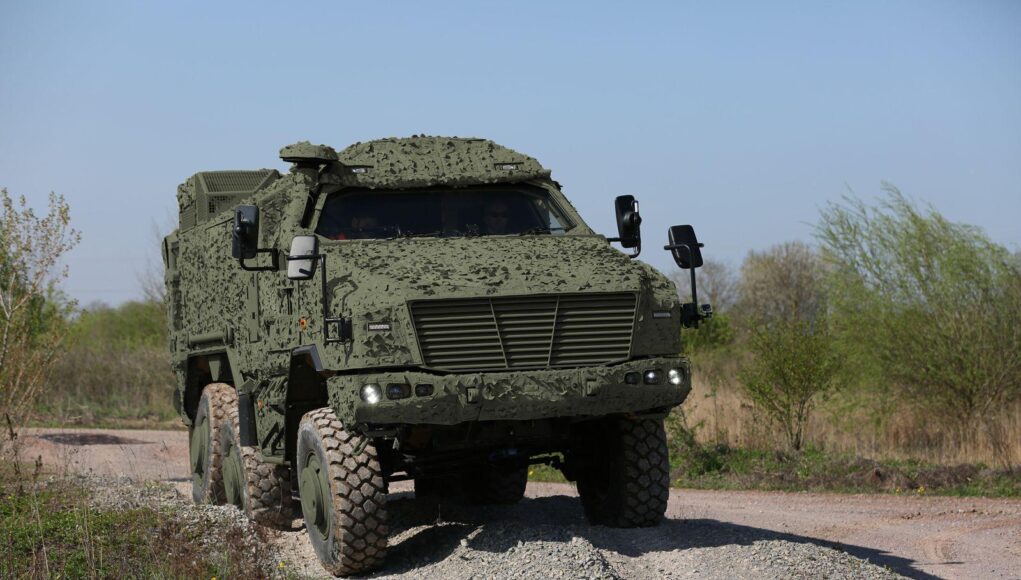

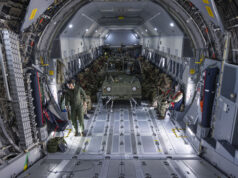



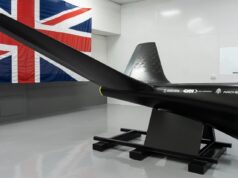
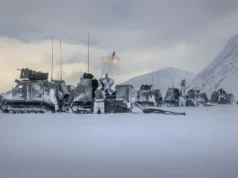

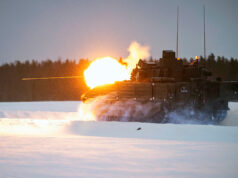

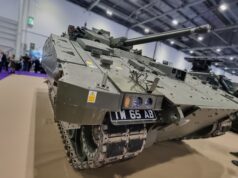

Maybe Australia’s Bushmaster and Hawkei are a big part of the solution. Both are already in service and have proven ability. Both are highly adaptable and can be used in multiple configurations.
Perhaps it is worth looking into as part of the UK’s AUKUS pillar 2(?) obligations. The two countries have a long history of interoperability – makes sense to have common platforms. In this case the UK would also not have to go through a long, painful selection process.
I’m reading that we are moving away from Bushmaster ( 24 ?already bought for use by DSF ) and towards Patria.
I believe I saw an official announcement that we are now officially a Patria partner, but nothing on UKDJ about it yet- so may not be true..!
Yes I saw that too.
Fully expecting it to be ordered, as those rumours have been around for some time.
Apparently Babcock signed a teaming deal with Patria, so presumably they would be built at Plymouth.
Hope so!
Choosing a vehicle isn’t hard, is it…
The problem starts when certain people in the British Army and MOD start adding GUCCI requirements and push the price and production OTT
Very true. So obvious yet they never see this procurement creep.
Indeed John. ‘But one has to ask what’s not to like about a mature, combat-proven, logistically-sustainable, and locally produced platform along the lines of Dingo?’ I really had to smile at that one considering both Ajax and Boxer esp, could have been described in that way before the ‘gold plating’.
The thing that gets me, is why Land Rover has basically backed out of the military market, when in the UK anyway it had the majority share. The old Defender chassis and then the Wolf which the WMIK was based on. Was clearly a fallibility when facing improvised explosive devices (IEDs), mines and RPGs. The failings of standard utility vehicles in urban and asymmetric combat, led to the development of the mine resistant ambush protected (MRAP) vehicle. Which after significant casualties from troops travelling in Land Rover Snatch and Pinzgauer vehicles. Led the Army through urgent operational requirements (UORs) to get the Mastiff, Ridgeback and Panther and then the Foxhound.
But in this time, Land Rover must have seen what other Companies were developing. What were they doing? It seems nothing! Whilst the MRAP market is now a multibillion dollar market. They have probably missed the boat completely now.
I can only presume that JLR has been focused on trying to get itself profitable in the civilian market and has had to invest immensely in new models, Jaguar is especially weak presently and trying to re organise as an all electric brand while the Co Payne is trying to develop joint cross brand chassis where it can. Unlike in their past these new army vehicles will have little in common with their production civilian products and I just don’t think their Indian masters will cough up investment or want the distraction of a military programme as things stand. Only one way I could see that happening and that would be the Indians using Land Rover expertise to produce large orders for the Indian army and using that as a base to export too, rather mimicking the post war experience with Royal Enfield motorbikes (well not the uk collapse it hopefully). Trouble is LR’s experience is in off road and they don’t exactly have experience in the sort of survivable vehicles now required, it would have to be as part of a much wider cooperation agreement. Like so many other once influential companies this is indicative of long drawn out failings and lost opportunities over many years while foreign companies were simply more insightful and motivated and/or had the investment to hand and used it with purpose.
this is all due to long evolving failures
Davey, the British Army has not been a significant customer for JLR for many years. They sell more vehicles to farmers and NGOs than to the BA.
Hi Graham, that was my point. What made Land Rover change its mind over staying in the military market, as the military Defender/Wolf had a pretty good export market. But Land Rover failed to develop a MRAP type of vehicle, which was taken up by Supacat.
We should develop products derived from Supacat and Foxhound!! These are world beating products in their own right and show we have the skills to go it alone. If we always select the foreign products that are polished, final and mass produced we will never have sovereign design and development. These skills will be lost and we will end up without the inovators that have proven their worth in the Ukraine. A german or american company offering to set up a factory in the UK is not the same as a British Company setting up a factory in the UK, for a german company will always prefer german suppliers, and an american company will always develop their products with the US military in mind. None of these foreign products would exist without their respective governments support and protectionism. Just look at the French, German, Polish and Italian militaries and you see they develop and buy their own equipment.
Yeah especially now. Don’t General Dynamics have extensive rights to the Supercat designs?
Now then as us mere mortals will not be able to buy anything with a ICE after 2030, will mad ed have any say in this?
🥱
Sorry are we keeping you up?
Putting me to sleep with the typical tedious polemics of the anti-science brigade 🤷🏻♂️
So will mad ed have any say on the armed forces buying ICE vehicles due to his net zero agenda?
Try to stay awake and a simple answer will do👍
Not all vehicles have to transition to electric to meet net-zero, with those that don’t being met by carbon offsets. The amount of pollution from U.K. military vehicles is a minute fraction of that from buses, trucks, or cars in general.
That said electric is being looked at by defence manufacturers and of course Ukraine has shown the usefulness of near silent electric vehicles in an operational theatre.
(But I’m sure Mad Jacksie will just respond by parroting words that the Regress party have taught him.)
There you go👍see it wasn’t to hard was it?BTW you really shouldn’t just go making assumptions about people🙄
So really nothing new to the end of 2027, like most things its a much needed idea and right to do, how ever the numbers always get cut, high end always gets cut to cheap low end. Why we can not pick some thing made here i do not know. Foxhound modified would be a good buy but we do like our bespoke over expensive late in to service stuff and then due to cost have reduce the number needed.
And the numbers ordered will effect the cost and who builds it, We never order large amounts and if do its spread out over so many years a bit like Boxer that its take for ever to equip every one.
Results in added cost as we have either to gap roles or kit or keep out of date stuff on longer.
The trouble with all our armed forces they’ve been reduced so much over the years we couldn’t even protect our own country. The MoD and the past governments and present just haven’t a clue there’s to many chiefs not even Indian’s and machinery that works properly. My great great great grandfather fought and died in the War that ends all Wars. We had the world’s finest Armed forces in both wars now look at us. We’ve reduced so much that now they’re only realising we haven’t enough man power to operate our Navy. If only we kept these Dockyards open we’d have a new more ships. Also our Navy is laughing stock we build ships then we don’t have enough parts to keep them working because staff had been stealing them. We are still yes behind every country why,???
😆
JLR will be an expensive electric noddy car maker by the time this project gets off the drawing board so they would never get involved. Cheers Ed UK industry sidelined once more. If we are lucky we will have a factory where robots bolt the bits together for the Swedish/Korean/Yank/Turkish company that will make all the money.
Patria and Dingo look the favourite to me from reading this article. Germany is buying several hundred Payria for its own armed forces. And looks like we are increasingly aligning ourselves with German vehicles such as Boxer , Boxer Artilery and the Challenger 3 which i believe just has a Leapord turret on it. The Turkish offerings look goofed. Would be nice to see supercat but are they not owned by general dynamics ? And i have not noticed any supercat vehicles that standout . Alot of there stuff don’t even have protection for drivers from the weather let alone drones and shrapnel
That’s meant to say the Turkish offerings look good vehicles . I like them . But why can a nation like Turkey create a defence industry out of no where in 15yrs with a budget the fraction of the UK
Possibly because we have yet to devise an effective process for culling the incompetent out of our political class before they actually attain power.
Challenger 3 doesn’t have a leopard turret. It’s a bespoke design.
Please not Land Rover, are poor lads have enough to put up with without a Land Rover product, their vehicles only ever come top in one thing, the most unreliable vehicles sold.
This should be the start of an on time, on budget quality project, built in the UK by a UK owned Company. Fix the requirement, spec etc and then do not touch !! can’t be that difficult can it ?
ok stupid question ……………
Please not Land Rover, are poor lads have enough to put up with without a Land Rover product, their vehicles only ever come top in one thing, the most unreliable vehicles sold.
This should be the start of an on time, on budget quality project, built in the UK by a UK owned Company. Fix the requirement, spec etc and then do not touch !! can’t be that difficult can it ?
ok stupid question ……………
The answers are:
1. Turkish Nurol Makina 10 ton NMS-L built in the UK at their new premises with 60% UK content and the promise of future exports. Guaranteed to be cheaper than either KNDS or Thales offerings.
2. Finnish Patria 20 ton CAVS 6×6 built by Babcocks in the UK. Amphibious, cheap (half the price of a top end Boxer), operated by NATO allies. Existing variant operates NEMO 120mm Mortar.